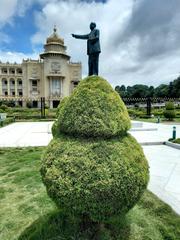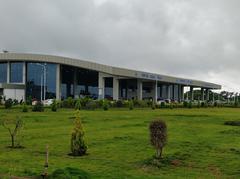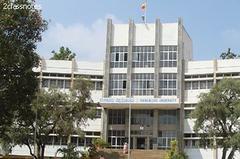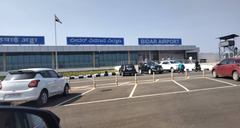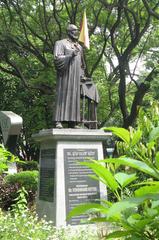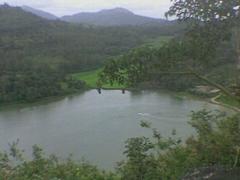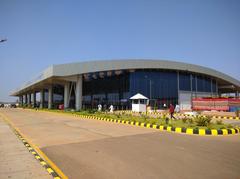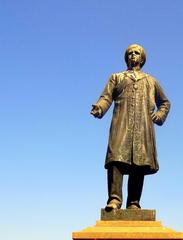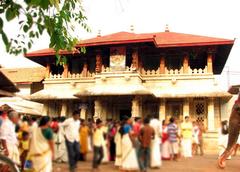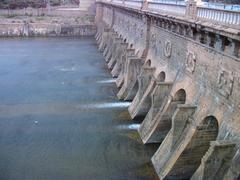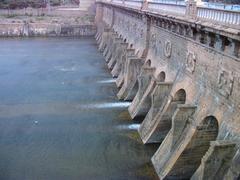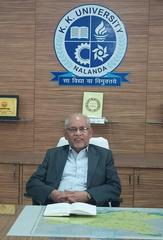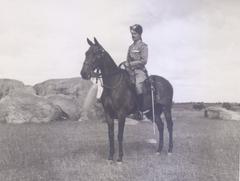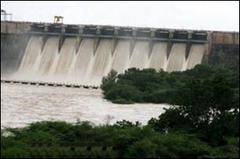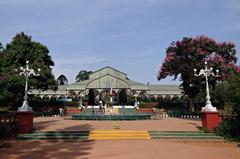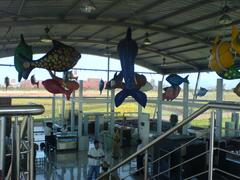
Kalyani Fort Visiting Hours, Tickets, and Travel Tips
Date: 23/07/2024
Introduction
Table of Contents
- Introduction
- Origins and Early History
- Architectural Significance
- Role in Regional Politics
- The Bahmani Sultanate and Later Periods
- The Maratha Period
- British Colonial Era
- Visitor Information
- Preservation and Modern-Day Significance
- Cultural Impact
- Conclusion and Call to Action
- FAQ
Origins and Early History
Kalyani Fort has a rich and storied past that dates back to the early medieval period. Constructed during the reign of the Chalukya dynasty, which ruled large parts of southern and central India between the 6th and 12th centuries, the fort served as a military stronghold and administrative center, safeguarding the region from invasions and maintaining control over the surrounding territories.
Architectural Significance
The architecture of Kalyani Fort reflects the typical Chalukyan style, characterized by intricate carvings, robust fortifications, and strategic design. The fort’s walls are made of large, interlocking stones, providing both strength and flexibility to withstand attacks and natural calamities. The layout includes multiple layers of defense, with outer and inner walls, watchtowers, and bastions strategically placed to provide a panoramic view of the surrounding landscape.
Role in Regional Politics
Throughout its history, Kalyani Fort played a crucial role in the regional politics of southern India. During the Chalukya period, the fort served as a key administrative hub, overseeing the governance of the surrounding areas. It was also a center for trade and commerce, facilitating the movement of goods and resources across the region. The fort’s strategic location made it a coveted asset for various dynasties that followed the Chalukyas, including the Rashtrakutas and the Western Chalukyas.
The Bahmani Sultanate and Later Periods
In the 14th century, the Bahmani Sultanate emerged as a dominant power in the Deccan region, and Kalyani Fort came under their control. The Bahmani rulers recognized the fort’s strategic importance and invested in its maintenance and expansion. They added new fortifications, improved existing structures, and used the fort as a base for their military campaigns. The fort remained under Bahmani control until the late 15th century, when the sultanate fragmented into smaller kingdoms, known as the Deccan Sultanates.
The Maratha Period
In the 17th century, the Maratha Empire, under the leadership of Chhatrapati Shivaji Maharaj, rose to prominence in the region. Kalyani Fort became a part of the Maratha territories and played a significant role in their military strategies. The Marathas used the fort as a staging ground for their campaigns against the Mughal Empire and other regional powers.
British Colonial Era
With the advent of British colonial rule in the 18th century, Kalyani Fort’s military significance began to wane. The British, with their advanced military technology and strategies, did not rely heavily on traditional forts for defense. However, Kalyani Fort continued to serve as an administrative center and a symbol of regional pride. The British made some modifications to the fort, including the addition of new administrative buildings and infrastructure, but largely preserved its historical architecture.
Visitor Information
Visiting Hours
Kalyani Fort is open to visitors from 9:00 AM to 6:00 PM daily.
Ticket Prices
- Indian nationals: INR 50
- Foreign tourists: INR 200
- Children under 12 years: Free
Guided Tours
Guided tours are available on request and are highly recommended for first-time visitors.
Accessibility
The fort is accessible by road, with ample parking available for visitors. The nearest airport is in Hyderabad, approximately 150 kilometers away.
Nearby Attractions
While in Hulsoor, consider visiting other nearby historical sites such as the Bidar Fort and the Bahmani Tombs.
Travel Tips
- Wear comfortable footwear as exploring the fort involves a fair amount of walking.
- Carry water and sun protection, as the area can get quite hot during the day.
Preservation and Modern-Day Significance
Today, Kalyani Fort stands as a historical monument, attracting tourists and history enthusiasts from around the world. Efforts have been made to preserve the fort’s architectural integrity and historical significance. The Archaeological Survey of India (ASI) has undertaken several restoration projects to maintain the fort’s structures and prevent further deterioration.
Cultural Impact
Kalyani Fort is not just a historical site; it is also a cultural landmark that reflects the diverse influences that have shaped the region over centuries. The fort’s architecture and inscriptions provide valuable insights into the cultural and artistic traditions of the Chalukyas, Bahmanis, Marathas, and other dynasties that ruled the area. The fort is also a venue for cultural events and festivals, celebrating the region’s heritage and fostering a sense of community among the local population.
Conclusion and Call to Action
Kalyani Fort’s history is a tapestry of architectural brilliance, strategic importance, and cultural significance. From its origins under the Chalukya dynasty to its role in regional politics and its preservation in modern times, the fort stands as a testament to the rich and diverse history of Hulsoor and the broader Deccan region. Visitors to Kalyani Fort can immerse themselves in this history, exploring the fort’s ancient structures and learning about the dynasties that once ruled the land. For more historical insights and travel tips, download the Audiala mobile app, check out our other posts, or follow us on social media for updates.
FAQ
What are the visiting hours of Kalyani Fort?
Kalyani Fort is open to visitors from 9:00 AM to 6:00 PM daily.
Are guided tours available at Kalyani Fort?
Yes, guided tours are available on request and are highly recommended for first-time visitors.
What is the ticket price for visiting Kalyani Fort?
Tickets are priced at INR 50 for Indian nationals and INR 200 for foreign tourists. Children under 12 years enter for free.
How can I reach Kalyani Fort?
The fort is accessible by road, with ample parking available. The nearest airport is in Hyderabad, approximately 150 kilometers away.


